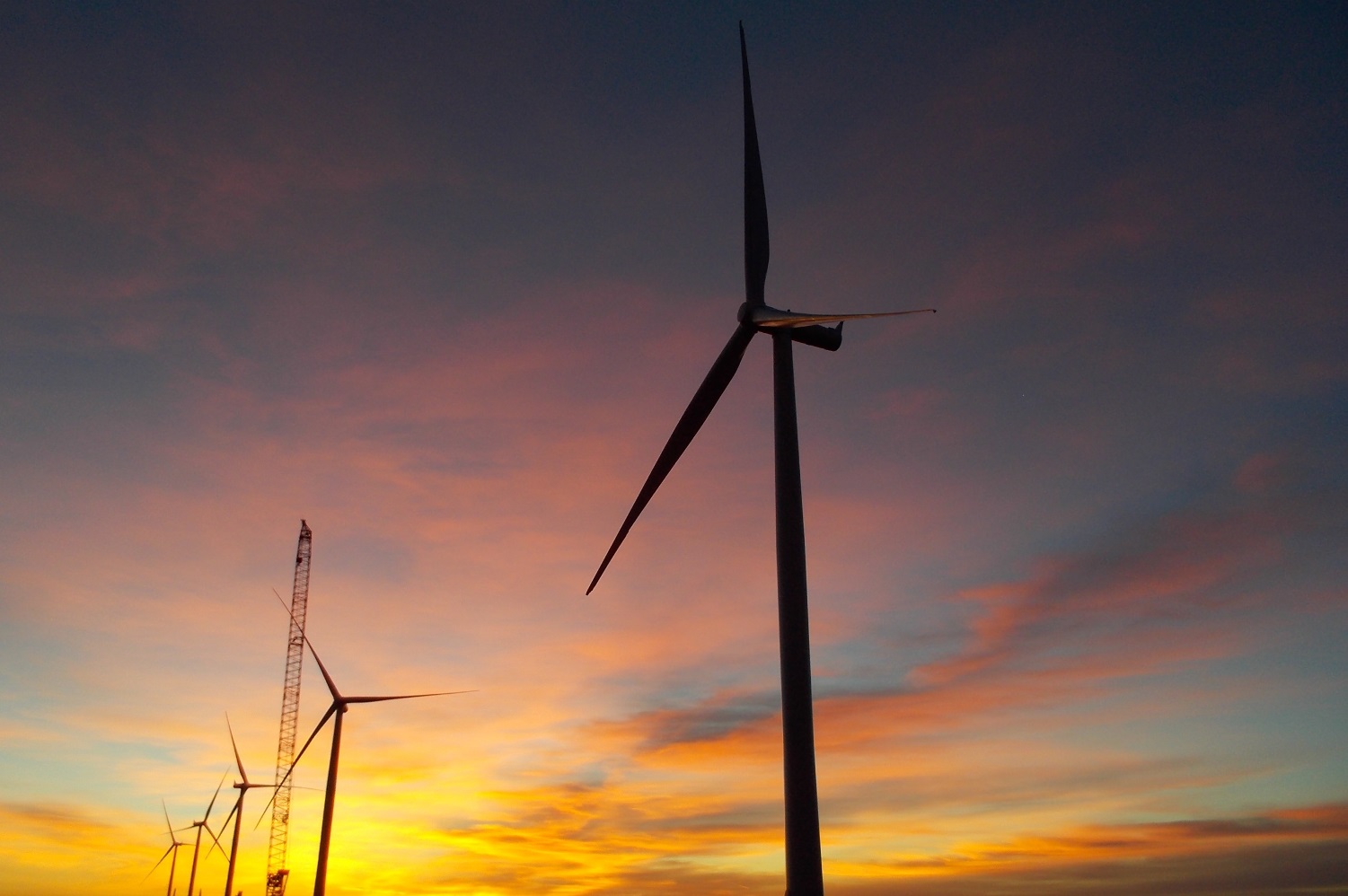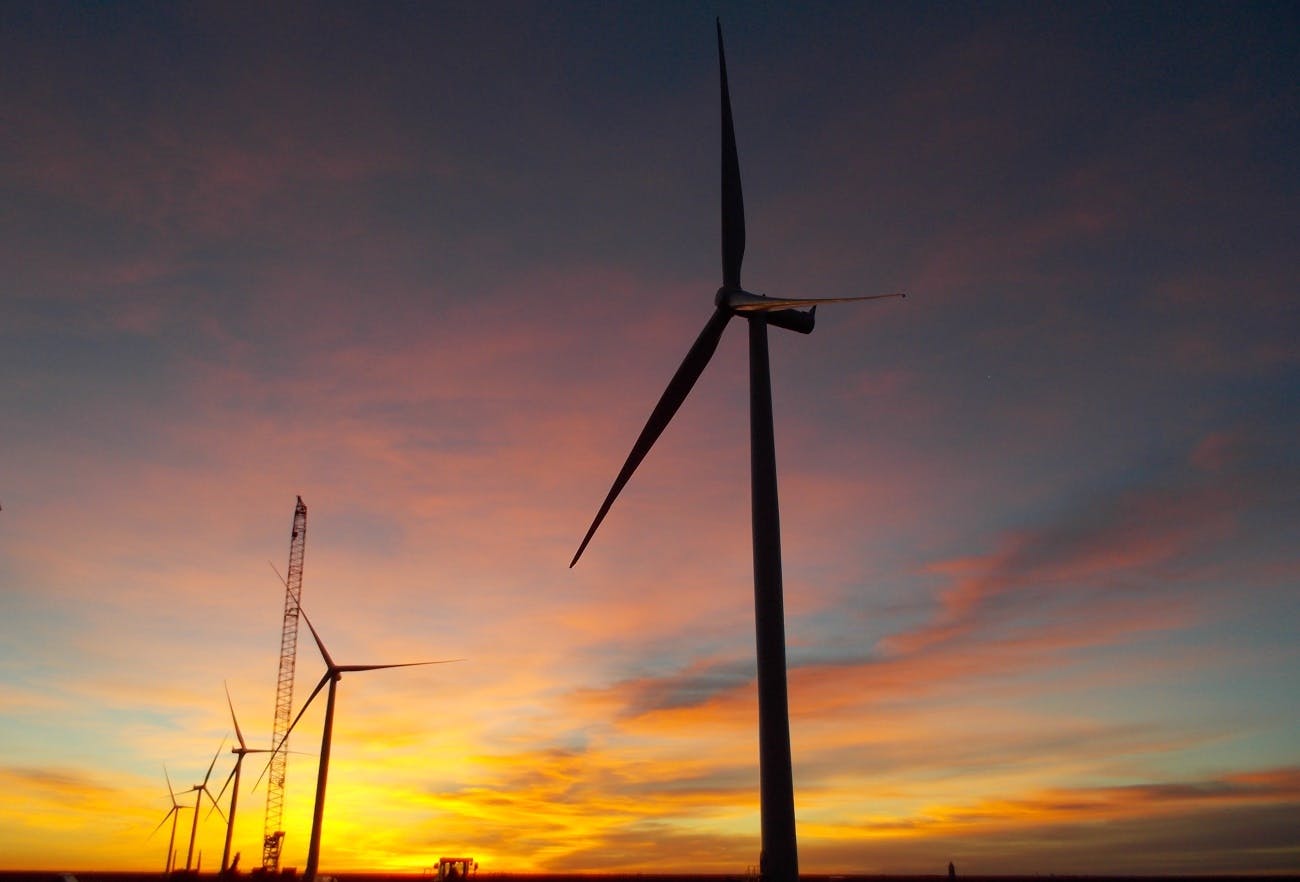Within the world of wind power, Kurt Myers and his engineering team are like Swiss Army knives in a silverware drawer. In his career as a wind energy systems expert, Myers has become a leading consultant in federal wind and solar developments. He travels as a Department of Energy contractor to influence regional, national and international energy research and development projects.
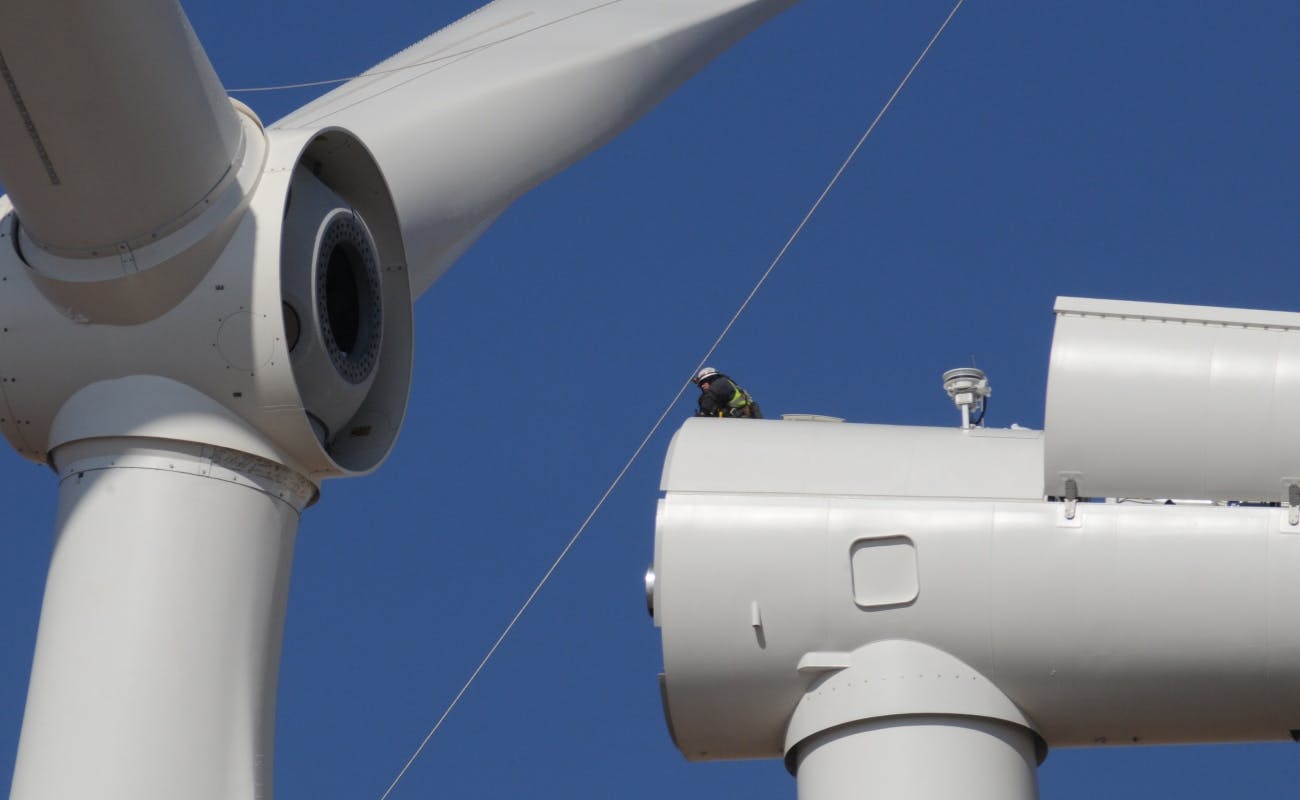 INL engineers played a leading design and engineering role in the nation’s largest federally owned wind project — the advanced renewable wind power system at DOE’s Pantex facility in Amarillo, Texas.
INL engineers played a leading design and engineering role in the nation’s largest federally owned wind project — the advanced renewable wind power system at DOE’s Pantex facility in Amarillo, Texas.
Myers and his Idaho National Laboratory team provide full-scale power systems engineering and development support within the federal system.
“We are one of the most experienced wind and solar development teams within the government infrastructure,” Myers said. The team works on feasibility studies, conceptual designs, environmental reviews, and assists with contracting inputs and construction oversight of facilities for government agencies, including the DOE, Air Force, Army and Navy.
Myers and his Wind Power Program team of engineers are playing a leading design and engineering role in constructing the nation’s largest federally owned wind project — the advanced renewable wind power system at DOE’s Pantex nuclear weapons stockpile facility in Amarillo, Texas.
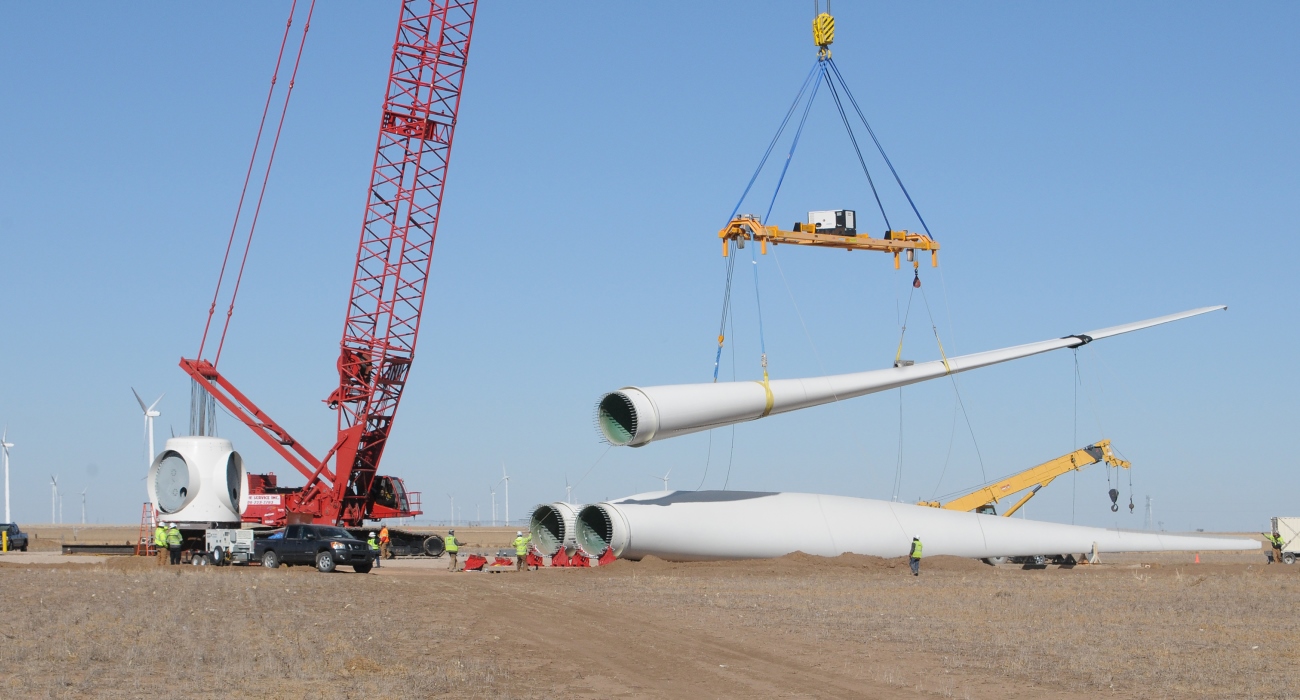 The wind farm project will provide about 60 percent of electricity used at the Pantex installation.
The wind farm project will provide about 60 percent of electricity used at the Pantex installation.
The wind farm project was created as part of the federal government’s goal to have 20 percent of its electricity from renewable energy resources by 2020. This wind project will provide approximately 60 percent of the electrical energy used by the Pantex facility, and will save an average of $2.8 million per year in energy expenses.
Planning this massive project at Pantex began almost five years ago. INL helped officials conduct resource assessments, collect average wind speed and environmental data, and perform wind farm modeling and economic feasibility assessments.
With this environmental documentation in hand, Myers’ team presented its research findings, which gave Pantex officials the confidence they needed to initiate such a bold renewable energy construction project.
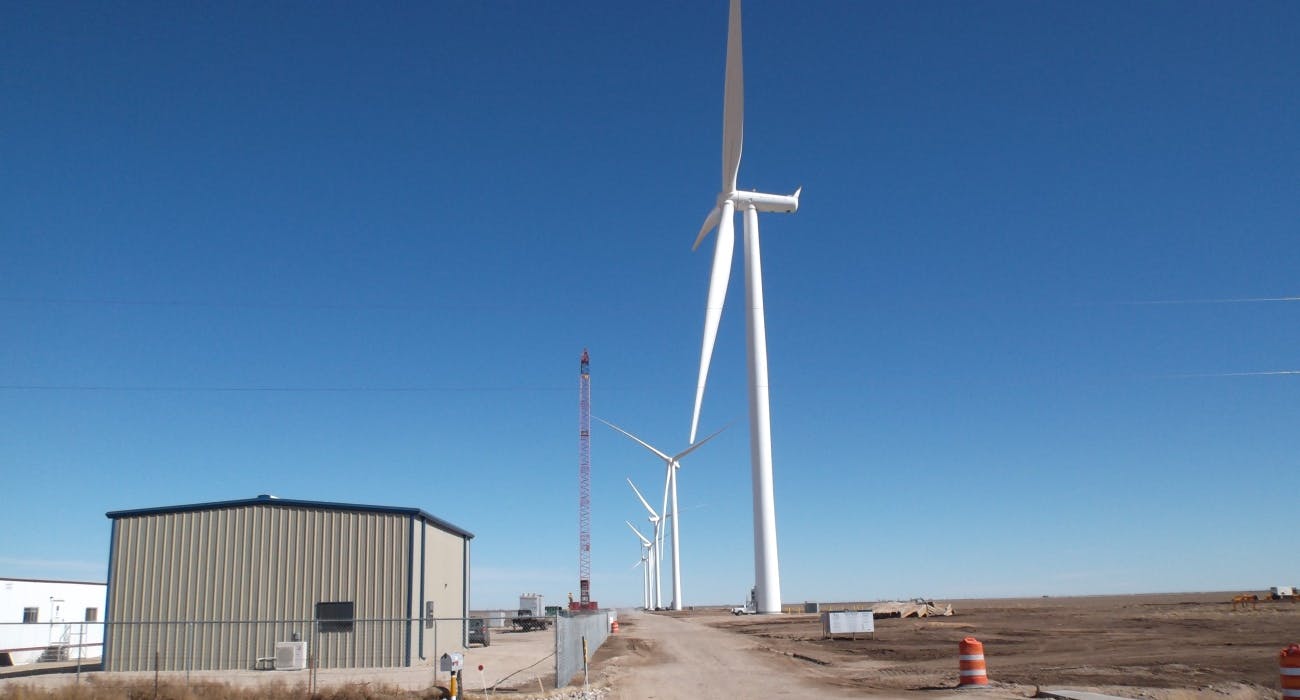 Each of the five new 2.3 megawatt turbines will contribute to the 11.5 MW total generation capacity at the site.
Each of the five new 2.3 megawatt turbines will contribute to the 11.5 MW total generation capacity at the site.
The team also engaged in technical discussions with the Federal Aviation Administration for clearance reviews. It also assisted with technical inputs for utility interconnect processes, provided performance design expectations and specifications, and helped Pantex secure the required authorizations and permits.
After receiving the go-ahead from Pantex officials, the project solicited construction bids from private-sector contractors. Under this team’s influence, the bid package guided interested bidders concerning accurate, competitive and responsive bid documents.
As part of final project planning arrangements, INL prepared two-thirds of the proposal’s “design-build” specifications and the drawings necessary for bid solicitation. The remaining one-third of the engineering design work was held in reserve for the successful bidder — since this work was based on selected vendor information and equipment procurements specified in the final design documents. This design work included, for example, the wind tower foundation design, the proposed wiring diagrams and the final utility design and grid interconnect processes.
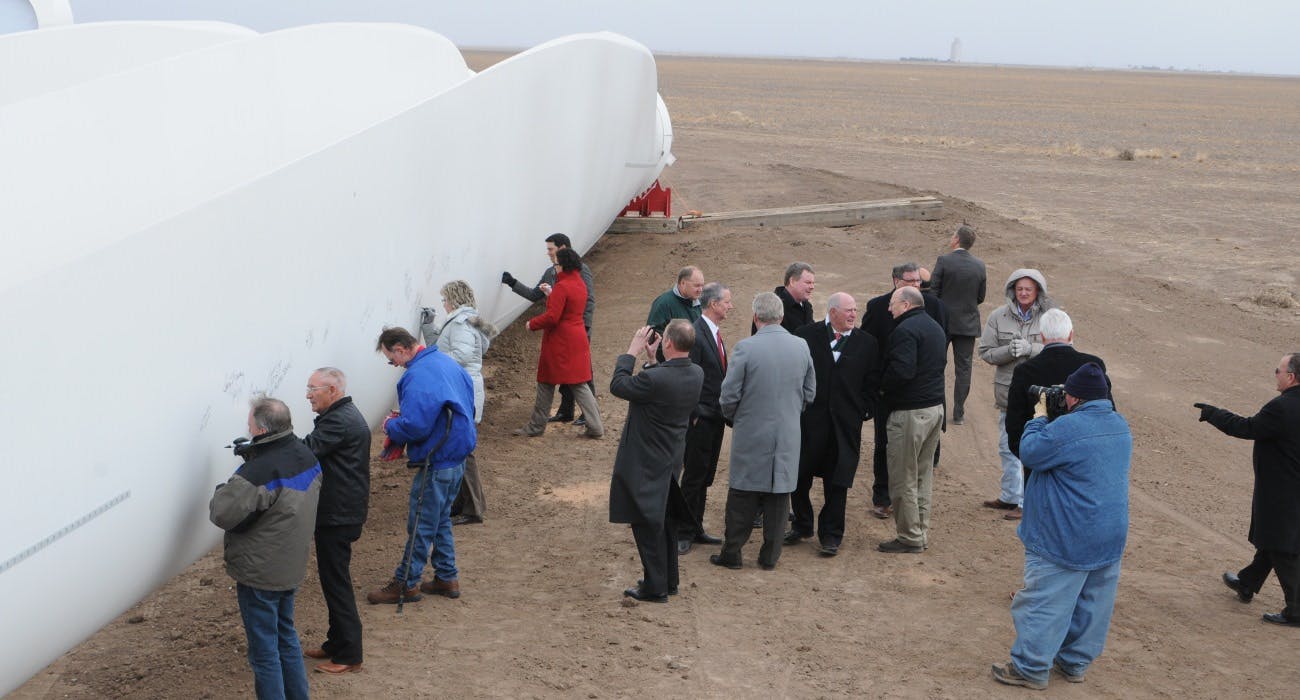 Representatives sign a windmill blade after Pantex officials award the construction contract to Siemens Government Technologies, Inc., under an Energy Savings Performance Contract.
Representatives sign a windmill blade after Pantex officials award the construction contract to Siemens Government Technologies, Inc., under an Energy Savings Performance Contract.
As Pantex officials approached contract award time, they asked INL to participate in the technical input portion of the selection process reviews. Following these reviews, the Pantex wind farm construction and operation contract was awarded to Siemens Government Technologies, Inc., under an Energy Savings Performance Contract.
This award set the stage to begin action in the field as Siemens broke ground and began construction of the 11.5 megawatt (MW) wind farm development in August 2013. When completed in mid-2014, the wind farm will have five new 2.3 MW turbines connected to its power grid.
“When we look at developing renewable energy resources at sites like Pantex, the challenge is that it needs to make economic sense compared to its utility and benefit,” said Myers. “The average life of a wind farm is about 20 to 25 years, and saving an average of $2.8 million a year over its life cycle pays for the wind farm construction and reduces Pantex’s electric utility costs.
“Through this project, we are doing what we would like to see others do to increase their renewable energy portfolio, and doing it cost-effectively.”
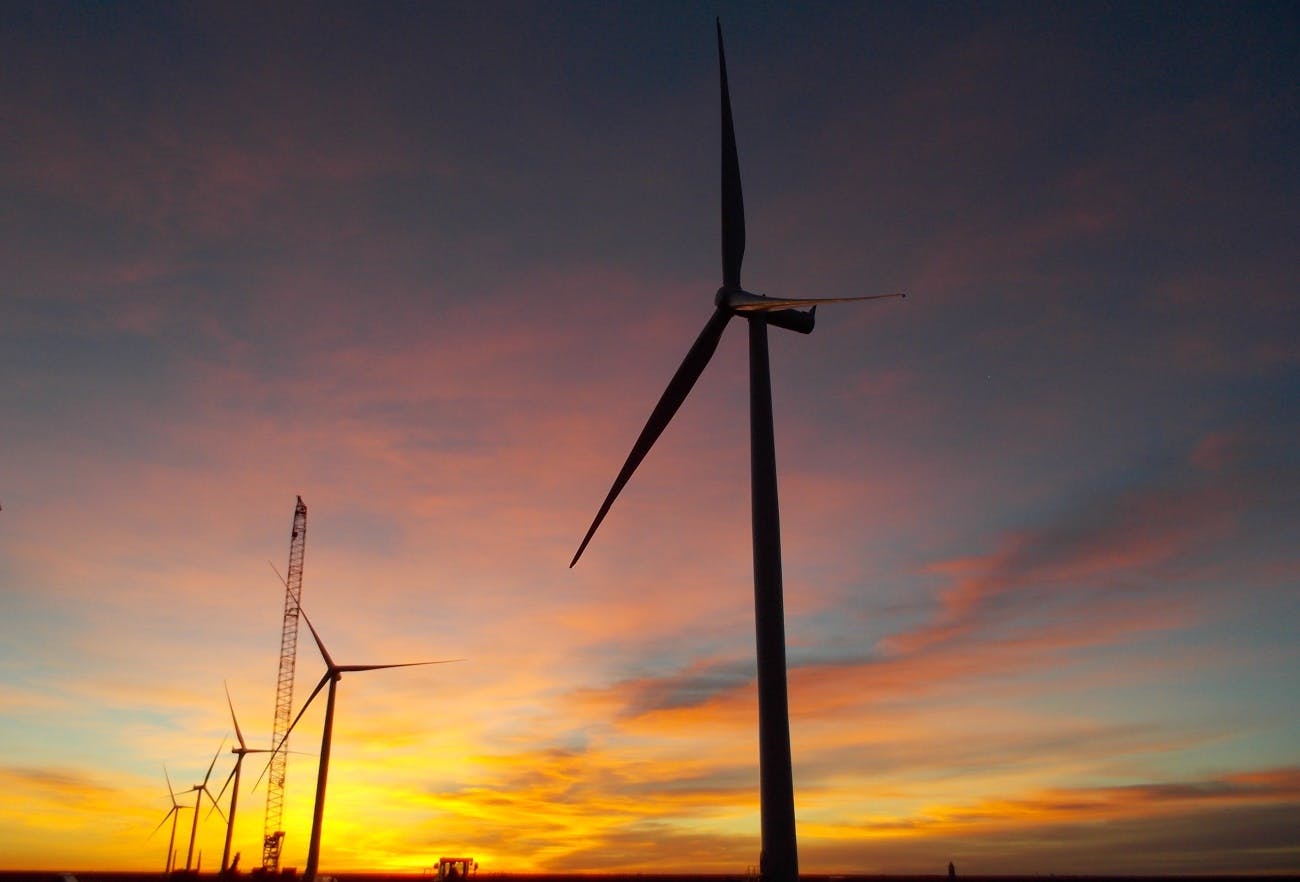 The wind generation capacity will save Pantex an annual average of $2.8 million over the turbines’ lifetime, savings sufficient to pay for the wind farm development.
The wind generation capacity will save Pantex an annual average of $2.8 million over the turbines’ lifetime, savings sufficient to pay for the wind farm development.
This project is economically feasible because Pantex has wind resources that generate more than enough electrical power savings to offset the cost of developing the wind farm.
Not only does it have the wind, it has plenty of space so future turbines could be added to the grid. Adding generation capacity of just two more turbines could increase the energy savings at Pantex to 85 percent of its annual electric energy use.
While representing part of DOE’s Wind Powering America Program from 2000 to 2009, Myers’ team also focused outreach activities on private renewable energy developers. It was during these interactions that Myers learned the business of developing wind power. His principal role was to advise companies concerning the feasibility of investing in, locating and developing wind energy resources — and getting more renewable energy to the grid.
Myers and his team have prepared renewable energy feasibility studies for scores of clients, from Alaska, Hawaii, Guam and the Cook Islands in the Pacific Rim, to the Bahamas and Ascension Island in the Atlantic.
The team also has assisted with dynamic transmission line concurrent cooling ratings throughout the U.S., Canada and the United Kingdom. This technology takes advantage of the cooling effect of blowing wind to cool high-tension power lines while allowing an increased flow of electricity.

